Historically, organizations have been effectively leveraging structured data to drive their decision making, empower users, and achieve business transformation. However, over the last decade and longer, the sheer volume of user and machine generated information, largely unstructured and semi-structured in nature, has become a major source of information important for business empowerment. Besides traditional text documents, this includes audio, video, sensor-data, chat conversations, click-stream, e-mail messages, log-data, and other free-form content that does not adhere to any specific schema. These data sources are gaining prominence for advanced business analytics.
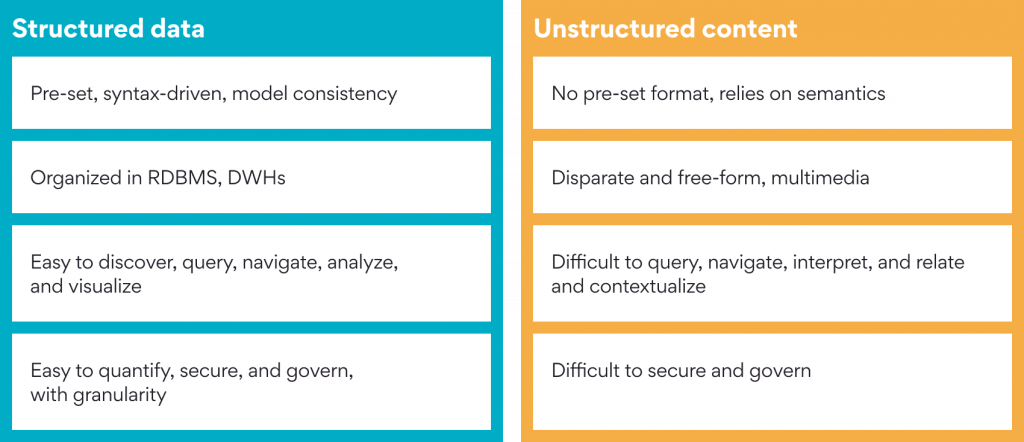
The growing use and reliance of unstructured content in legal, regulatory, pharmaceutical, healthcare, banking, media, insurance, and hi-tech industries is noteworthy. Market intelligence and research firms such as IDC and Gartner indicate that unstructured content will continue to take a significant share of enterprise data, and estimate it to be upward of 80% of the total data assets. With these information assets growing at over 50% annually, there is much left to be tapped in terms of intelligent & automated discovery and interpretation of unstructured content to deliver smart and actionable responses to the business user query.
The areas of research & development, legal & compliance, customer relationship & support, and workplace productivity, have demonstrated practical success stories when the right kind of cognitive technologies are applied to the right set of real-world use cases. This success is not limited to just a few industries but is cutting across a large spectrum of domains including banking, e-commerce, entertainment, financial services, government, hi-tech, insurance, legal, media, pharmaceuticals, and others.
But how do we determine the key factors important in choosing relevant use cases and then articulating the problem statement that will translate to business success? Business transformation that leverages enterprise information to deliver actionable and sustainable business outcomes has following key tenets –

Using the right intelligent search technology and applying it suitably, businesses see following transformations across the engagement life cycle –
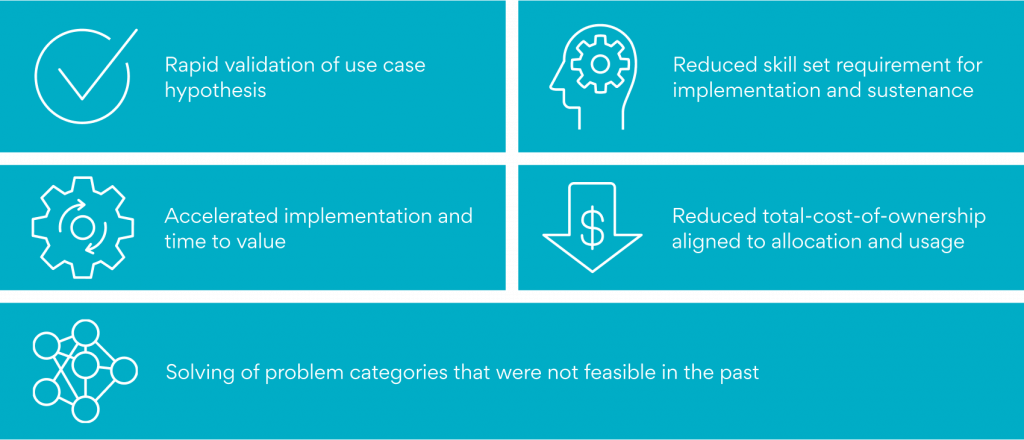
In the following paragraph, we cover several key advancements in the search technology, the different nuanced ways in which organizations are applying these cognitive technologies towards transformative outcomes, and the implementation challenges that we must address.
1. Unlike the traditional keyword search, intelligent search excels in delivering accurate, contextual, and actionable search outcomes by meaningfully interpreting the indexed text as well as user queries. Intelligent search engines such as Amazon Kendra apply deep-learning powered reading comprehension over large texts fetched from variety of distributed and diverse content sources. This enables offering authoritative, prescriptive, and descriptive answers by extracting the most relevant text passage. As seen in the below snippet, this translates to handling of who, where, and when questions as well as how, what, and why questions.
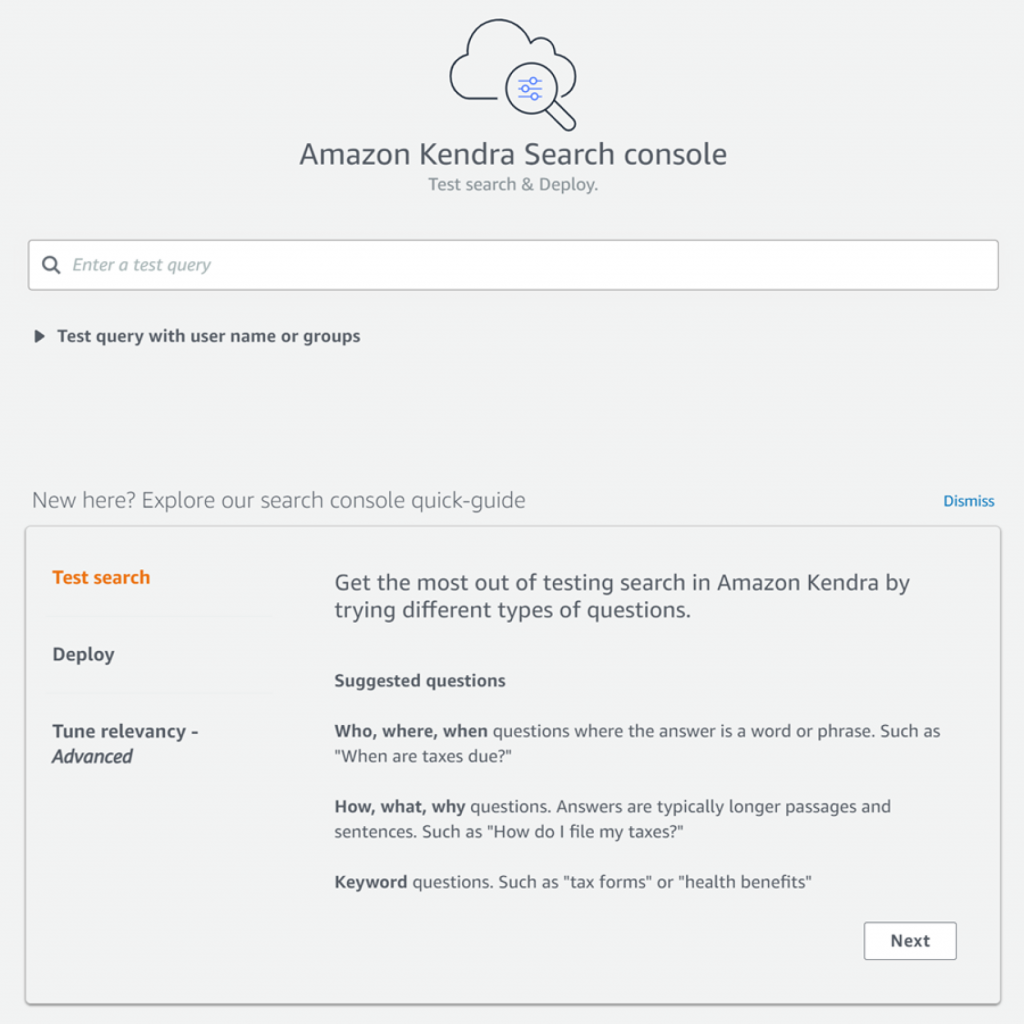
This allows businesses to transform text document resources into more actionable assets that not only saves time & effort but also assures more reliable decision making for their employees, stakeholders, and partners. A few example business outcomes achieved and demonstrated across different industries and departments are listed below –
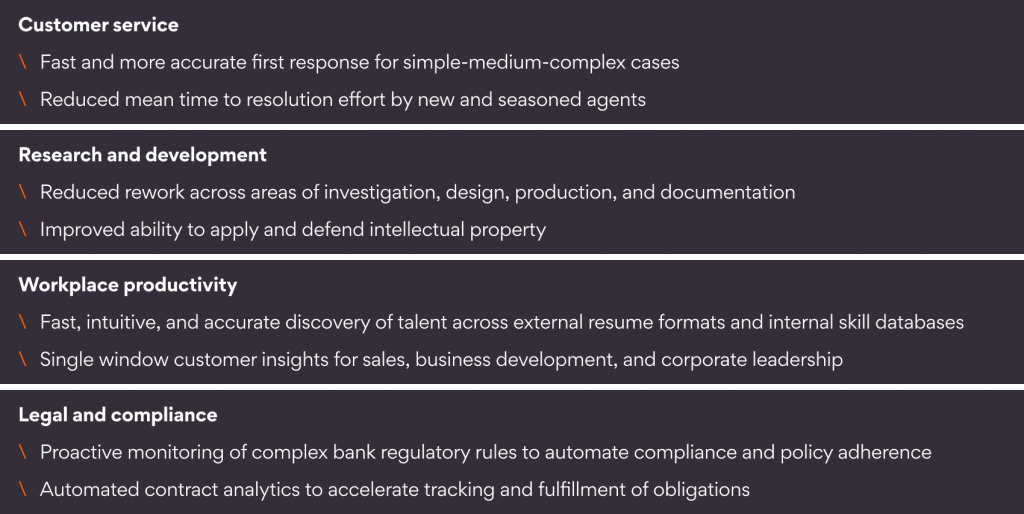
2. With its built-in support from machine learning and natural language understanding, intelligent search is reducing the disparity within the end user group. It no longer requires them to be skilled and gifted in formulating the perfect search query for the most efficient match. This has expanded the applicability to a wider set of use cases and empowered the user experience from a variety of input devices & methods. It also offers a smarter query auto suggestion and faceted filtering features that help reduce user typing and guides them towards a more precise & fulfilling query formation.
Below example shows the impact of delivering precise and actionable response to the user search query.
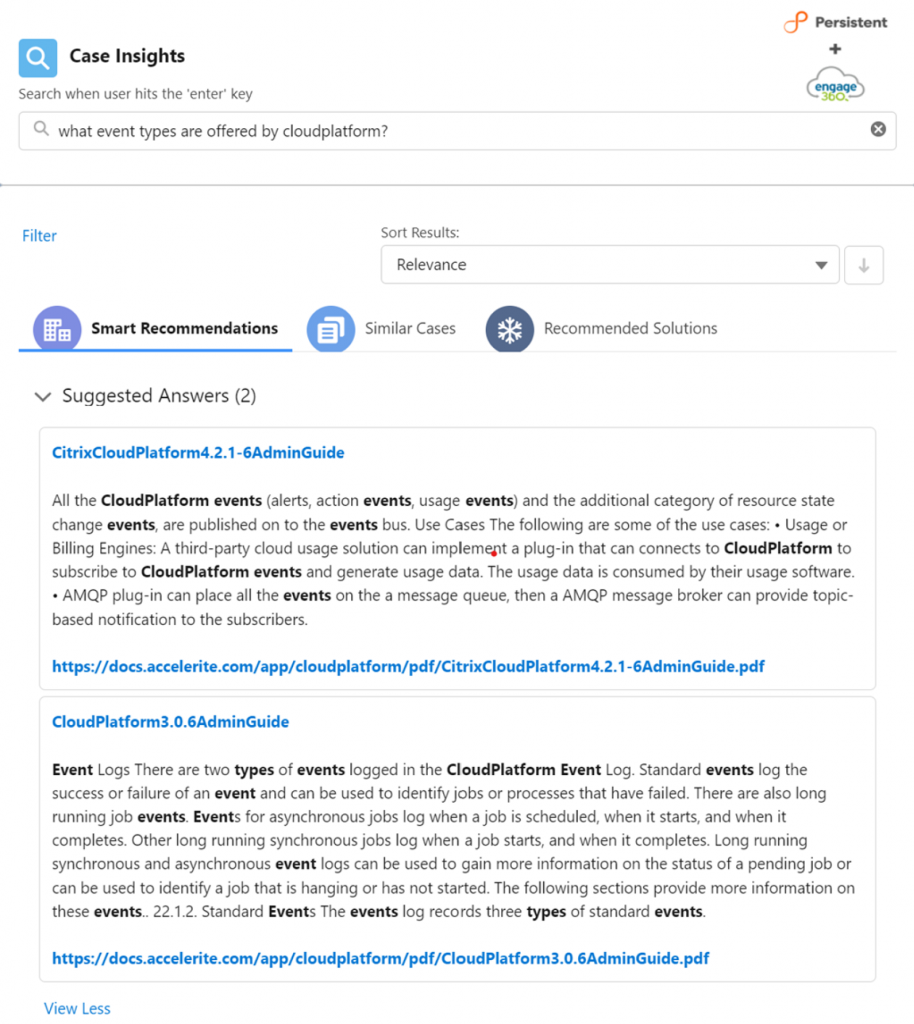
This leads to information democratization and enhanced user productivity & satisfaction. Positive outcome is experienced across research & development, customer relationship & support, and workplace productivity. Above example illustrates how the customer support agent can leverage the available knowledge and find answers to customer queries and problems with the ease and accuracy, without having to navigate and search through disparate application interfaces and distributed knowledge repositories.
3. Historically, three of the key reasons why data science and artificial intelligence projects failed include (a) Complexity & upfront cost of the required infrastructure, (b) Demanding expertise & skillset necessary for design & implementation, and (c) Level of effort to tune the models specific to the organization’s domain.
With intelligent search like AWS Kendra, these pre-requisites and hindrances are eliminated. Being available as an on-demand service (SaaS), it has no special infrastructure setup, hardware, or software prerequisites to be procured, installed, and maintained. This further reduces technology lock-in, and the ongoing cost of ownership is in-line with the quantum of resources allocated and/or used.
Being pre-trained over 10 industry domains, majority of organizations can apply the technology to most of their search-based business use cases.
There is no up-front or ongoing tuning necessary and the relevancy is delivered to business user from the get-go. This eliminates the complexity, hard work, delay, and propensity of failure in delivering quality throughput. This approach has encouraged and enabled many organizations to validate their use case hypothesis within a few hours, implement a pilot project within a few days, and roll out the initial solution within a few weeks, without requiring any up-front planning and provisioning exercise.
4. Modern organizations rarely solve a business problem or implement a solution in isolation. Any business use case is weighed for its scope, design, and deployment in consideration of the holistic view of their business process, involved workflows, user persona priorities, and IT & budget constraints. Similarly, solving a data-driven problem usually involves several complementary tools and technologies. Here are a just a few modern technologies when combined with intelligent search capability that has helped organizations within different industrial sectors address issues with over-arching business impact –

For example, we have leveraged Amazon AI services such as AWS Comprehend, Textract, Transcribe, and Lex along side AWS Kendra to solve a variety of business problems involving disparate content types and complex use cases. For our customers, it meant delivery of impressive solutions that were either too difficult, very costly, or simply not possible to implement.
5. Industries such as pharmaceutical and life sciences have begun tasting success by applying intelligent search to areas that has not be possible in the past or too complex to implement. As an example, the significance of comprehensive, accurate, and up-to-date drug label content cannot be emphasized enough, but this process has been laden with challenges. Finding drug label precedence from disparate and scattered sources of regulatory, market, research, and other silos is difficult and time consuming with the traditional methods of information access.
However, with intelligent search, scientists, researchers, and label content writers can discover precise drug precedence in following illustrated way –
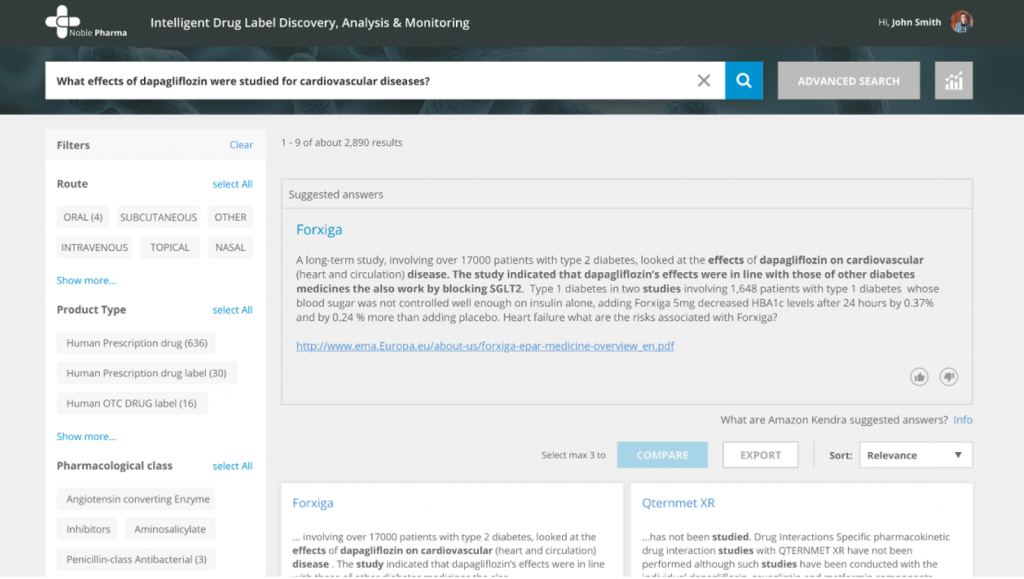
Such capabilities at the disposal of pharma companies are leading to –

These success areas are just a few of what we are closely experiencing and participating in. The intelligent search capabilities are transforming how organizations are translating their data assets to something that delivers distinct, measurable, and commendable value at the point of research, innovation, development, and service. At the same time, it has reduced the time, effort, and anxiety associated with the technology preparation, implementation, and refinement – which is a cause for celebration for the end users, IT and business stakeholders alike. Checkout this short video to explore how Persistent’s Engage 360 solution has proven to be transformational for Support agents and elevated customer experience.




